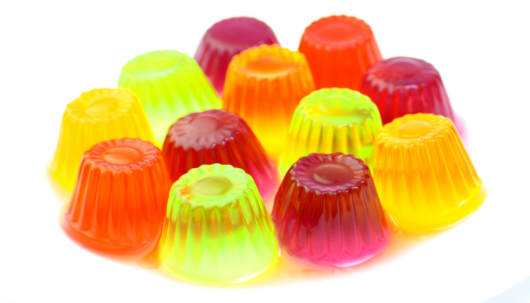What You Are REALLY Eating…
I love to cook, and because of this, I naturally will check out the ingredients on food labels to see what types of ingredients will make the yummy food I love to eat. I would like to think I’m a pretty smart shopper, so it’s quite annoying to come across so many ingredients that I can’t quite understand what the heck they really are.
So the question comes up, “What are we REALLY eating?”. Ever thought of that yourself? Here’s some common ingredients you will find in your grocery store, with surprising reality checks. Oh, and when I say “surprising”, it’s not in a good way! *gag*
Such a simple word, we’d hardly realize that gelatin is just a nice word for collagen – which is a protein that usually comes from animal skins! Yes, animal skins! The collagen source will vary, depending on the type of food it is used for, but desserts that use gelatin primarily will use collage from pig skin. All I’m thinking about is how that Strawberry Jell-O isn’t as appealing as it was five minutes ago.
Castoreum
You won’t see this ingredient specifically listed on food labels since it’s commonly listed as “natural flavoring”. So what is it really? Castoreum is extracted from the castor sac scent glands of a beaver. What’s more gross is that the castor sac scent glands are located near the anus. The FDA considered this ingredient generally safe, but all I can think about is how I have found another reason to cook from scratch with known ingredients.
Mechanically Separated Meat
There’s a little bit of meat that clings to the bones of pork or chicken after it has been forced through a sieve-like machine using high pressure. That leftover meat is mixed in with crushed bits of bone and cartilage (among other things) that becomes a paste and later used for cheap meats like hot dogs. Overall, this kind of meat is pretty gross. It would be best to avoid it completely!
Pink Slime
Very similar to Mechanically Separated Meat, the leftover meat that clings to fat and separated is called Pink Slime. This meat paste is commonly used as a filler in ground beef. You are probably wondering how common this Pink Slime is. How about 10 billion pounds sold per year? That’s 10 billion pounds too many for my standards.
Shellac
If ingredients were spelled-out for what they really are, nobody would eat anything with shellac in it. Shellac is a sticky substance that comes from secretions of a female insect called Kerria lacca. So what has shellac in it? Sorry candy lovers, but shellac is to blame for the shiny coat that covers treats like candy corn, jelly beans, and just about any other hard-coated candy that looks shiny.
Ammonia
You would think that ammonia would only be used for household cleaning purposes, right? For some unknown reason, ammonia was approved by the FDA to be used as a gas to kill germs in beef during processing.
Carmine
Some foods just aren’t as red as they appear to be. To add some red color to foods, carmine is added! Carmine comes from cochineal bugs (yup, insects again!) that are boiled and made to create red food-coloring. The FDA requires carmine to be clearly listed on food labels since some people have had life-threatening reactions to it. If you would like to avoid this ingredient (don’t blame you!), be sure to check the labels for Ice Cream, lemonade, grapefruit juice, Skittles, and Good n’ Plenty.
Lessons Learned
I bet a lot of Vegans didn’t realize how many animal products they were still consuming! If you are a Vegetarian or a Vegan, now you know what to avoid and I’m sure you’ll do an even better job of checking those ingredient labels out!
For all of us who aren’t Vegans but are still creeped out by the ick-factor of all of these common ingredients, we all now know what to try and avoid.
PS – I’m still sick thinking about the beaver and those insects… : /
Image Credit: gelatin
Feel free to follow us, however you like: Google+, Facebook, Twitter, Pinterest

